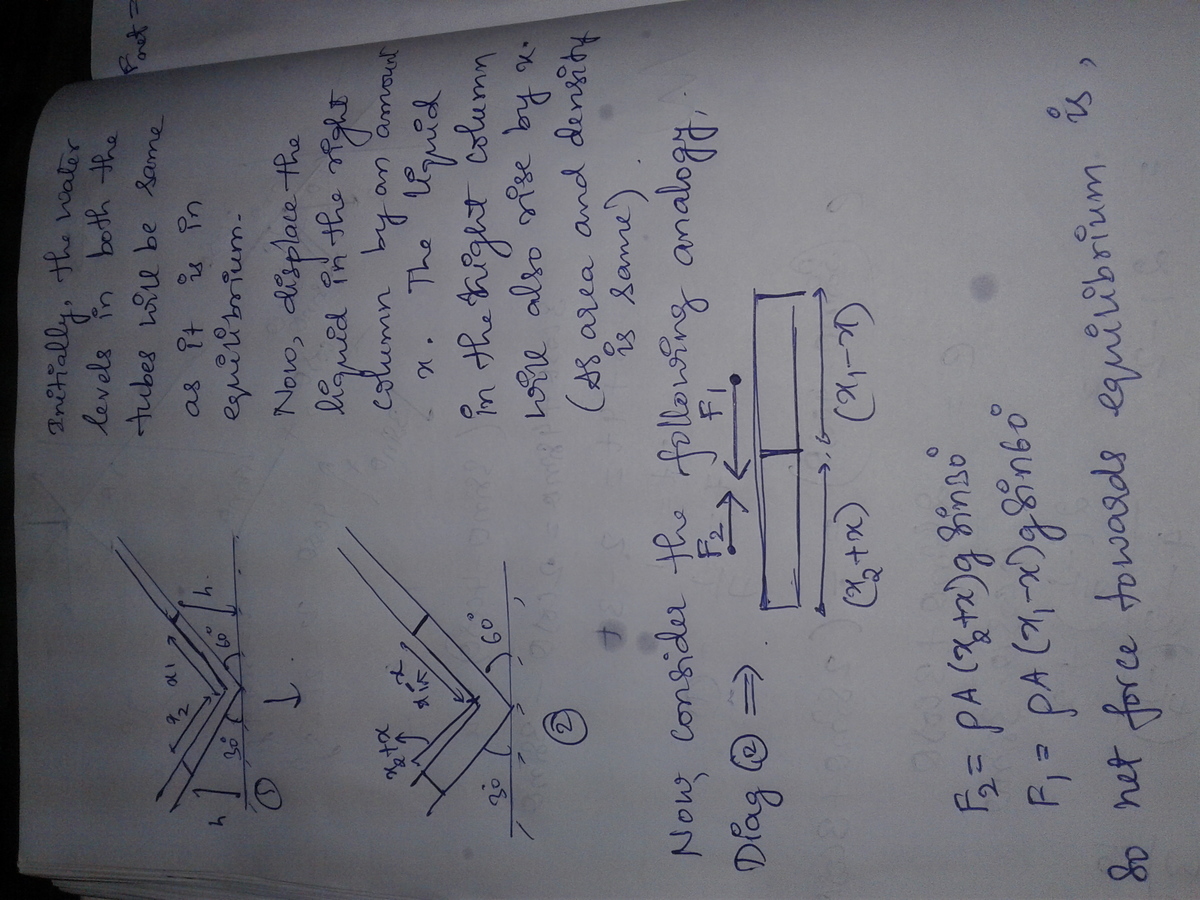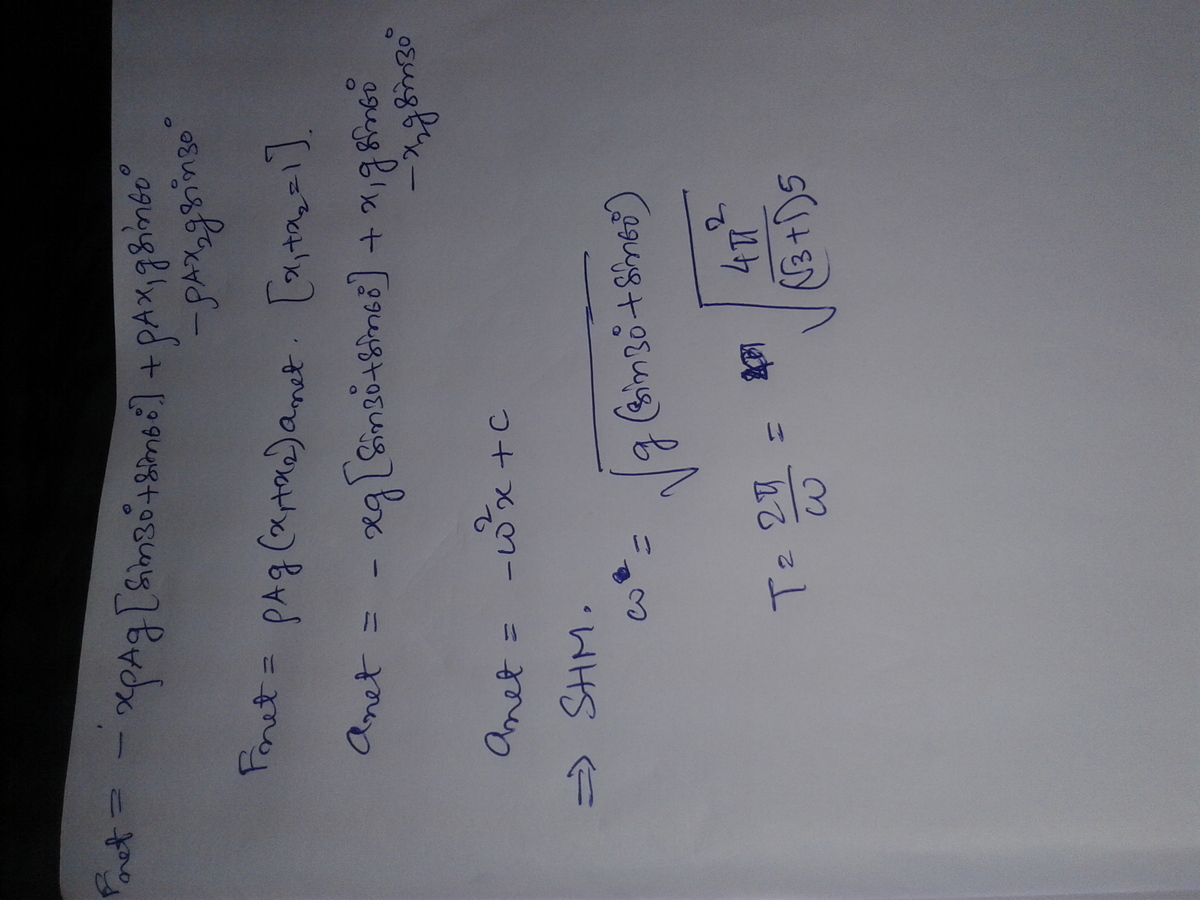SHM of liquid
A V-shaped tube attached to the ground with its vertex. It's one leg makes an angle of 3 0 ∘ , and the other leg makes an angle of 6 0 ∘ with the horizontal. The tube is filled with a liquid in a total length of 1 m . Now the liquid at one side is displaced a little.Find the Time - period of SHM.
Your answer can be represented as c ( d + 1 ) a π b ,
where a , b , c and d are positive integers with a , c coprime and d square-freee.
Enter your answer as a + b + c + d .
Details and Assumptions :
-
Neglect surface tension , viscuous force and friction.
-
g = 1 0 m/s 2 .
This is a part of my set: Aniket's Mechanics Challenges .
The answer is 14.
This section requires Javascript.
You are seeing this because something didn't load right. We suggest you, (a) try
refreshing the page, (b) enabling javascript if it is disabled on your browser and,
finally, (c)
loading the
non-javascript version of this page
. We're sorry about the hassle.
2 solutions


Same! Let me write a website-version for this.
Ready for a and b:
a + b = 1
a = 3 b
So, a = 2 3 − 3 , b = 2 3 − 1 .
By calculating and arranging energy,
K . E . = 2 1 m x ˙ 2
P . E . = 4 1 m g [ 3 ( x − b ) 2 + ( x + a ) 2 ]
So , Lagrangian will be
L = K . E . − P . E . = 2 1 m x ˙ 2 − 4 1 m g [ 3 ( x − b ) 2 + ( x + a ) 2 ]
Computing Lagrangian Equation:
∂ x ˙ ∂ L = m x ˙ , ∂ x ∂ L = − 4 1 m g [ 2 3 ( x − b ) + 2 ( x + a ) ]
d t d ( ∂ x ˙ ∂ L ) = ∂ x ∂ L
Get
a = x ¨ = − 4 2 3 + 2 g x
By the knowledge of SHM, the coefficient of x is − ω 2 .
So ω = 2 3 + 1 g
T = ω 2 π = 5 ( 3 + 1 ) 4 π 2
a + b + c + d = 4 + 2 + 5 + 3 = 1 4